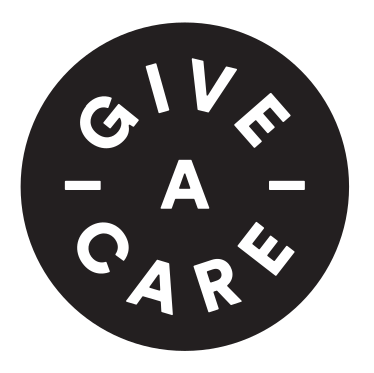Several years ago, a clinical psychologist named Susan Silk developed a concept while she was being treated for breast cancer called Ring Theory. It’s essentially a framework to help guide support during crises that’s illustrated by concentric circles: the person in crisis is at the centre, and each larger ring contains those next closest to the person in crisis.
The key principle is “Comfort In, Dump Out”—the person at the centre can express their feelings freely (anger, sadness, fear, etc.) to the outer circle, but those in that outer circle should offer only comfort back in.
So, in the case of someone going through breast cancer, it might look something like this:

Now, do you notice what’s not there? It’s the ones that didn’t show up. The cancer patient revealed their diagnosis to the people they thought would be there and—poof!—they disappeared, without explanation. No calls, no texts, no check-ins. Ghosting, but make it breast cancer.
WHAT IS CANCER GHOSTING AND HOW DO I PREVENT IT?
If you’re someone who cares about a person facing a recent cancer diagnosis, you’re probably thinking cancer ghosting can’t possibly be a thing. And it’s fair to assume that—it’s pretty counterintuitive. The big-C should be something that rallies a support system around them.
But all too often, it has the opposite effect. Like hair loss, surgical scars, and debilitating fatigue, ghosting is a devastatingly common yet unspoken side effect of this disease. I don’t know a single breast cancer patient who hasn’t experienced it, including yours truly. Indeed, when Team Rethink asked its community if they were ever ghosted by a friend during their diagnosis, a whopping 84% confirmed they had.
I could get into all the whys behind cancer ghosting (ranging anywhere from understandable to purely pathetic, IMHO), but my point is this: it hurts like hell. The loneliness and social isolation that come from seeing a close friend turn away at your weakest and most vulnerable moment is, in myriad ways, often more painful than the cancer treatment itself. And often takes longer to heal.
3 EASY WAYS TO SUPPORT A CANCER PATIENT IN YOUR LIFE
So, in an effort to banish cancer ghosting forever (ghostbusting, if you will), here are three super simple things that you, as a close friend, colleague, or family member, can do to truly show up for someone coping with a cancer diagnosis (especially when it feels hard):
-
Offer tangible support
Floral arrangements and colouring books are lovely gestures, but you know what’s even better? Utility, baby. Whether it’s picking up/watching their kids, arranging a cleaning service, doing yard work, dog walking/looking after the pets, organizing a meal train or food delivery service so she doesn’t have to cook/grocery shop, purchasing ride sharing gift cards to get to and from treatment (hospital parking is hella expensive, btw), offering to take notes at medical appointments that she can refer back to later (because, the brain fog struggle is real), there are so many simple yet oh-so-practical ways to help make the breast cancer journey just a little bit easier to bear.
-
Gift something meaningful (aka how to avoid pinkwashing)
When you're looking to show up for someone going through breast cancer, a gift that gives back to the cause can be a meaningful way to offer support—just make sure it's not another pinkwashed product. For the uninitiated, "pinkwashing" is when companies slap a pink ribbon on their products and claim to support breast cancer awareness, but don’t actually donate a significant portion of the proceeds and/or whose products are linked to known carcinogens (looking at you, KFC and Mike’s Hard Lemonade). To avoid this, look for gifts that are genuinely aligned with the cause and where the funds actually go towards research, treatment, or patient care. (Bonus points if they direct the proceeds towards stage 4/metastatic breast cancer support.)
Seek out brands that are transparent about their donations or opt for independent artisans whose creations benefit reputable cancer foundations directly. I may be biased here, but on top of the entire Give-A-Care collection, Rethink partners with some incredible local designers like This is J and The Cashmere Shop who’ve both created the coziest pieces (loungewear and wraps, respectively) a cancer patient could ask for.
-
Don’t be a grief tourist
When I first shared my diagnosis on social media, I was hit with an onslaught of attention. Surface-level acquaintances, friends of friends I barely knew, as well as people I hadn’t heard from in years, contacted me with words of support or, on the flip side, for their own personal exploration. Some were coming from a place of caring to be sure, but others adventured into grief tourism.
Arguably worse than cancer ghosting, a grief tourist is what the cancer fam refers to as someone who inserts themselves into a patient’s cancer journey out of curiosity, emotional drama, or for the clout without ever offering their support in any meaningful way. They pretend to care about you, but in actuality, are using your trauma to centre themselves.
Key takeaway: someone’s cancer journey is not there for your entertainment or personal exploits. It’s not about being performative, it’s about being present. And when it comes to showing up for someone you care about who is facing a breast cancer diagnosis, remember that your job is not to fix it or to pull them out of their grief. Your job is simply to love them through it. Your people are not problems to be solved. They are people to be loved. — Aya McMillan
Aya McMillan is a Key Collaborator for Rethink Breast Cancer. Since her IDC diagnosis in 2017, Aya has supported the community through fundraising, peer mentoring, and sharing her story in research papers, panels, blogs, and interviews — all in the hope of making the next girl’s cancer journey a little more bearable.



